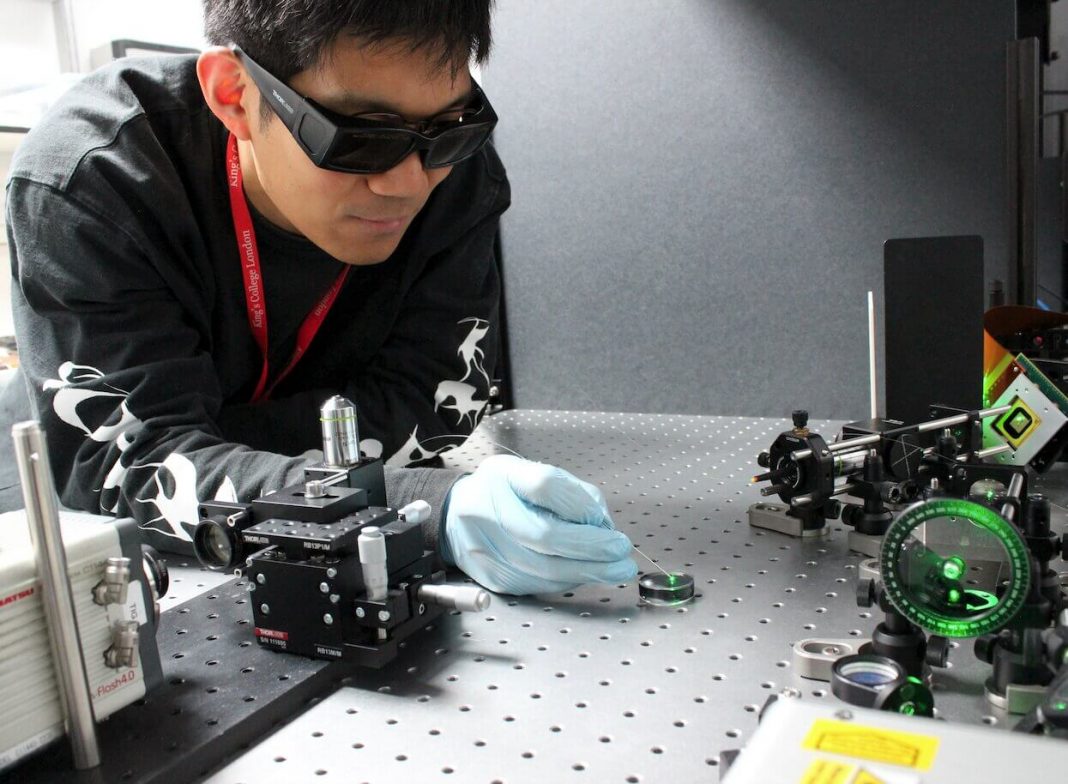A photoacoustic imaging endoscope probe that was developed by researchers can fit inside a medical needle with an inner diameter of just 0.6 millimetres. Although photoacoustic imaging, which combines light and sound to produce 3D images, can offer crucial clinical information, the instruments have up until now been either too large or too slow for use as forward-viewing endoscopes in actual practise.
Wenfeng Xia, Head of the Research Team, King’s College London’s School of Biomedical Engineering & Imaging Sciences, says, “Traditional light-based endoscopes can only resolve tissue anatomical information on the surface and tend to have large footprints. Our new thin endoscope can resolve subcellular-scale tissue structural and molecular information in 3D in real-time and is small enough to be integrated with interventional medical devices that would allow clinicians to characterize tissue during a procedure.”
King’s College London and University College London, both in the UK, worked closely together to develop the ultra-thin endoscope, which is discussed in the Optica Publishing Group journal Biomedical Optics Express. Two optical fibres, each about the size of a human hair, make up the device.
Xia further said, “The imaging speed of this photoacoustic endomicroscopy probe is two orders of magnitude higher than those previously reported. It could eventually allow 3D characterization of tissue during various minimally invasive procedures such as tumour biopsies. This could help clinicians pinpoint the right area to sample, which would increase the diagnosis accuracy.”
The researchers used the new apparatus to acquire high-resolution visuals of mouse red blood cells covering an area 100 microns in diameter in attempt to display the device. “We were able to accomplish this at about 3 frames per second. We also showed that the needle probe can be scanned to significantly enlarge the field-of-view in real-time by stitching together consecutive images,” highlighted Xia.
The researchers note that when the probe was scanned, imaging performance did not significantly suffer, indicating that minor fibre bending has no impact on it. But as a first step toward clinical application, they will look into the effects of complex fibre bending or semi-rigid configurations on imaging performance. Additionally, they claim that the speed of imaging could be increased using artificial intelligence.
Xia added, “Although this work focused on the development of a photoacoustic endomicroscopy probe, the high-speed method used to deliver the excitation light can be used to incorporate other imaging modalities such as fluorescence imaging, Raman microscopy and two-photon microscopy,”
toward clinical application, they will look into the effects of complex fibre bending or semi-
rigid configurations on imaging performance. Additionally, they claim that the speed of
imaging could be increased using artificial intelligence.
Xia added, “Although this work focused on the development of a photoacoustic
endomicroscopy probe, the high-speed method used to deliver the excitation light can be used
to incorporate other imaging modalities such as fluorescence imaging, Raman microscopy
and two-photon microscopy,”

